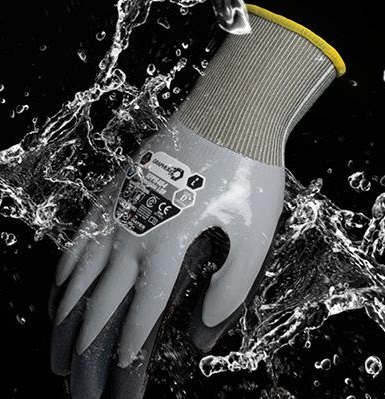 It's important to understand that waterproof gloves and water-resistant gloves are designed for different purposes. Water-resistant gloves provide some protection against water, but they are not entirely waterproof.
It's important to understand that waterproof gloves and water-resistant gloves are designed for different purposes. Water-resistant gloves provide some protection against water, but they are not entirely waterproof.
Waterproof gloves are impermeable to water, keeping your hands completely dry even when fully submerged.
While waterproof gloves may seem like the obvious choice for maximum hand protection in wet conditions, it is a thicker non-breathable glove, which makes them heavier and less dexterous.
Water-resistant gloves also offer several advantages of their own. The right choice depends on the specific environment and the level of water exposure you'll encounter.
Graphex water-resistant gloves are breathable and flexible, making them ideal for tasks that require dexterity or prolonged use. These gloves are made thinner and more flexible, offering improved grip and dexterity, but there is a limit to their water resistance.
Other waterproof gloves have an added membrane to prevent water or liquid from penetrating through the glove. With more layers to prevent water from going into the glove, it becomes thicker and heavy. Heavy gloves can cause fatigue in the hands if used for extended periods, reducing dexterity and making it challenging to perform precise tasks.
The difference between the two:
Water Resistant = Repels water || Water proof = Will not penetrate through
Ultimately, water-resistant and waterproof gloves have their benefits and drawbacks, and the right choice will depend on your circumstances. It's vital to assess your needs and the conditions you'll be working in to decide which type of glove to choose.





